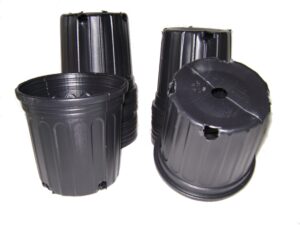
Shop vacuums are indispensable tools in any workshop or household, renowned for their versatility and power. Understanding how to use them effectively for dry pickup ensures efficient cleaning and maintenance of various surfaces. Whether you’re tidying up a workshop, cleaning a construction site, or simply removing dirt and debris from your home, mastering the art of shop vac operation can save time and effort. This article will delve into the intricacies of using a shop vac for dry pickup, offering insights into preparation, techniques, maintenance, and troubleshooting.
Introduction to Shop Vacuums
Shop vacuums, also known as wet/dry vacuums, are heavy-duty cleaning appliances designed to tackle a wide range of messes, from liquid spills to dry debris. Unlike conventional household vacuums, shop vacs boast robust motors and durable construction, making them suitable for demanding environments such as workshops, construction sites, and garages. Proper usage of these versatile machines is essential to maximize their performance and longevity.
Dry pickup refers to the process of using a shop vacuum to remove solid debris and dust particles from various surfaces. While shop vacs are capable of handling wet and dry messes, mastering dry pickup techniques is crucial for efficient and effective cleaning. Whether you’re clearing sawdust from woodworking projects or vacuuming up dirt from a carpeted floor, understanding the nuances of dry pickup ensures optimal results.
Preparing the Shop Vac for Dry Pickup
Before embarking on any cleaning task, it’s essential to prepare your shop vac and gather the necessary equipment and accessories. Selecting the appropriate attachments, such as crevice tools, brushes, and extension wands, allows for efficient cleaning of different surfaces and hard-to-reach areas. Additionally, ensure compatibility between the vacuum’s filter and bag system and the type of debris you’ll be collecting to prevent clogs and damage.
Safety should always be a top priority when using power tools and machinery, including shop vacuums. Pay attention to the power source and cord management to avoid tripping hazards and electrical accidents. Furthermore, wearing appropriate personal protective equipment, such as safety glasses and gloves, shields you from potential injury and exposure to airborne particles during the cleaning process.
Techniques for Efficient Dry Pickup
Achieving optimal results during dry pickup requires proper surface preparation and efficient operation of the shop vac. Begin by clearing any large debris and obstructions from the area you intend to clean, ensuring unimpeded airflow and suction. Secure loose items and cords to prevent them from being inadvertently sucked into the vacuum or causing damage.
When operating the shop vac, position it in a stable and ergonomic manner to minimize fatigue and maximize control. Adjust the suction power according to the type and amount of debris you’re cleaning up, avoiding unnecessary strain on the motor and components. Utilize smooth and deliberate movements, overlapping each pass slightly to ensure thorough coverage and removal of debris.
Maintenance and Cleaning
Regular maintenance is essential to keep your shop vac in peak condition and prolong its lifespan. Pay close attention to the condition of the vacuum’s filter, inspecting it regularly for signs of wear or clogging. Depending on the frequency of use and the type of debris collected, you may need to replace or clean the filter more frequently to maintain optimal suction and airflow.
Emptying the vacuum regularly prevents the accumulation of debris and ensures continued performance. Dispose of collected debris responsibly, following local regulations and guidelines for waste disposal. After emptying the vacuum canister, take the time to clean it thoroughly to remove any remaining debris or residue, preventing foul odors and potential contamination.
Troubleshooting Common Issues
Despite their durability and reliability, shop vacuums may encounter occasional issues that impede their performance. Loss of suction is a common problem that can arise due to blockages in the hose or attachments. Inspect the vacuum’s components thoroughly, removing any obstructions and ensuring proper airflow.
Overheating is another potential issue, especially during prolonged use or when vacuuming fine dust particles. Monitor the motor temperature regularly, allowing for cool-down periods as needed to prevent overheating and potential damage. If the vacuum continues to overheat despite precautions, consult the manufacturer’s guidelines or seek professional assistance to address the issue.
In conclusion, mastering the art of using a shop vac for dry pickup requires attention to detail, proper preparation, and efficient techniques. By following the guidelines outlined in this article and incorporating regular maintenance into your cleaning routine, you can ensure optimal performance and longevity of your shop vacuum, keeping your workspace clean and tidy with minimal effort.






